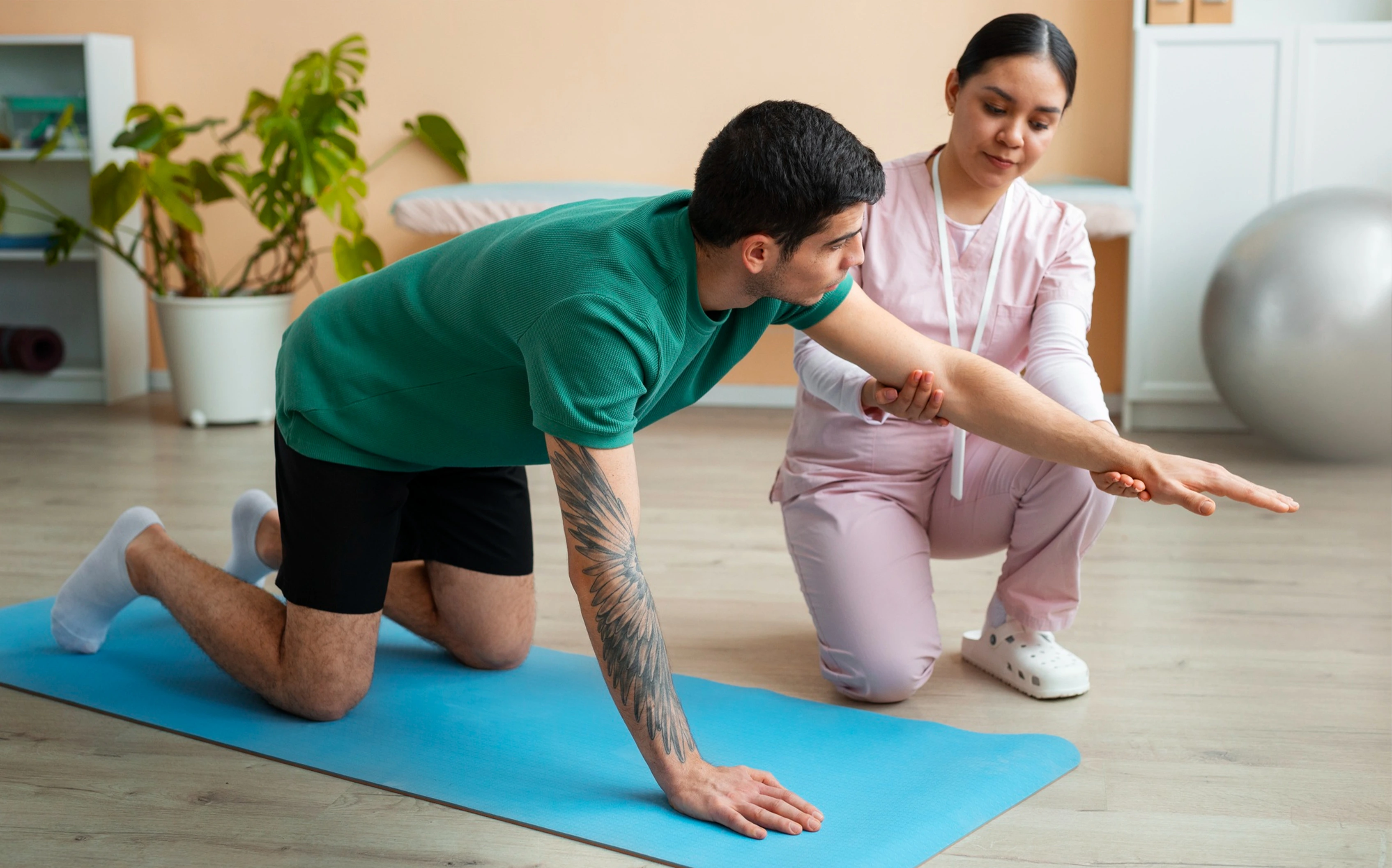
Have you heard of Arunima Sinha? In 2011, she lost her leg of the robbers pushed her from a moving train. Most people would have given up, but not her. But she turned her challenge into a successful story, yet two years later, in 2013, she climbed Mount Everest with a prosthetic leg. Additionally, she went on to conquer the highest peaks on all 7 continents.
You may think, Why are we telling this? Because Arunima’s story serves as a reminder that it’s never the challenges that define failure, but the right mindset you carry to rise again. Similarly, recovery from a health condition like paralysis may feel impossible, but with grit, professional guidance, and the right modern therapies, you can regain strength one step at a time.
One of the most effective tools for paralysis recovery is exercise. With the right approach, it helps improve mobility, rebuild muscle, and restore quality of life. Explore these top 5 exercises for paralysis recovery that can move you towards a journey of healing and independence.
Best Physiotherapy Exercises Tips for Paralysis Patient
Exercises are valuable tools that can aid in speeding up recovery from many health challenges, even paralysis. But you need to be aware of the fact that, when it comes to paralysis, exercises are not one-size-fits-all. They are performed under professional guidance and customized to your specific needs so that your every move is safe and effective toward recovery.
Here are the best physiotherapy exercises for paralysis due to stroke or any other reason:
These exercises are like a caregiver or physiotherapist gently moving your arm or leg for you. They ensure your joints don’t get stiff and remain flexible even if you are unable to move them yourself.
Effective for: Patient who cannot move limbs themselves.
These exercises ensure you lift your leg or arm up with a caregiver or physiotherapist supporting you, helping your muscles regain strength faster.
Effective for: Those having partially paralyzed arms or legs
These exercise gives your back a little hug by squeezing your shoulder blades together. They help fix your posture and ease shoulder pain.
Effective for: Individuals with poor posture or shoulder weakness
These exercises help pump your feet up and down and curl your toes. These are useful for preventing complications such as blood clots (deep vein thrombosis (DVT)) or foot stiffness
Effective for: Patients with limited foot movement
These exercises use visual feedback to rewire the brain. Think of looking in a mirror where your healthy arm and leg have the normal movement. When you imagine in this way, your brain begins to believe and helps your weaker side to move too.
Effective for: Everyone with a health condition.
For you to get the maximum result and faster recovery, consistency is crucial in home-based paralysis exercises. By following your exercises regularly, you are telling your brain to restore the function of the affected body part.
The consistency in your exercise sends signals to your brain that your body part needs to move normally. Hence, follow the exercise plan made by your doctor carefully to improve your muscle strength and movement over time. Consistency is the way to a faster recovery journey that is smoother and more effective.
Get the top care for paralysis recovery at Walk Again Rehab Center. At our place, exercises are guided by professionals combining the top modern technology. Unlike traditional methods, our personalized treatment plans are not based on one-size-fits-all and come with modern touches like robotic and AI-assisted therapies.
We ensure that your rehabilitation fits your unique needs and retrain your brain and body for faster, safer recovery. Contact Walk Again Rehab today and take the first step toward walking and moving smoothly again.
Q: What are the causes of paralysis?
A: Paralysis happens when nerve signals to muscles are blocked. There are many reasons; some of them are:
Q: How can I recover faster from paralysis?
A: Faster recovery can be achieved with consistent, professional-guided exercises at Walk Again Rehab. We help retrain your brain and muscles to work together.
Q: Can you recover 100% after a stroke?
A: The recovery depends on the severity, situation, and damage. But the most important thing it depends on your grit. The recovery data varies: Only about 10% recover fully in 30 days, and fewer than 20% achieve full recovery even over time. However, according to the American Stroke Association, around 10% of individuals who experience a stroke achieve a “complete recovery” within the initial 30 days.
Book an Appointment
Call Us09035030623